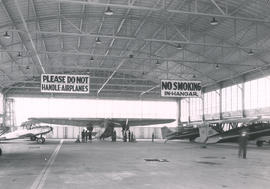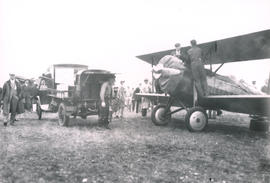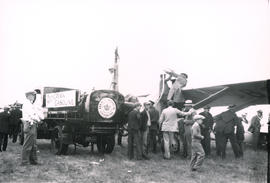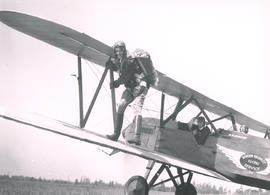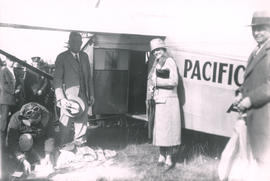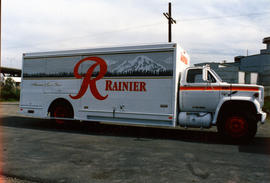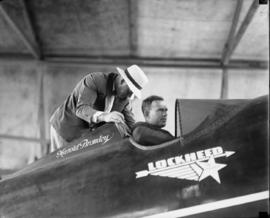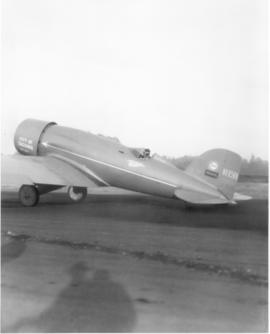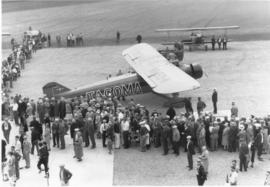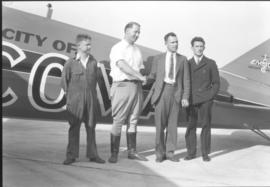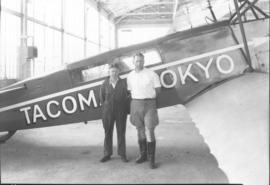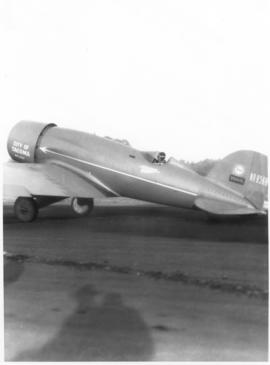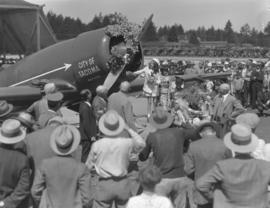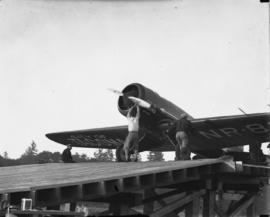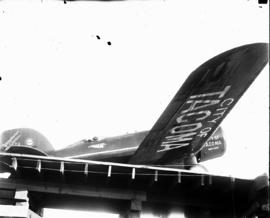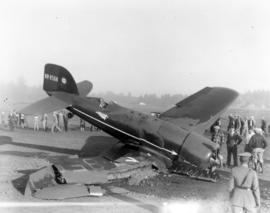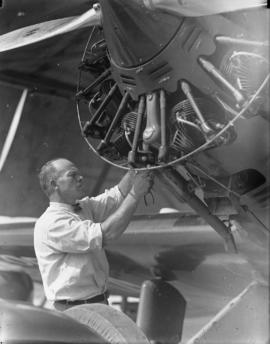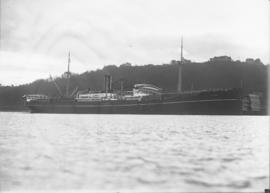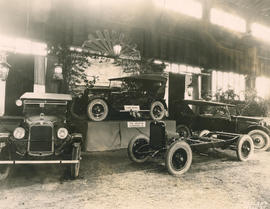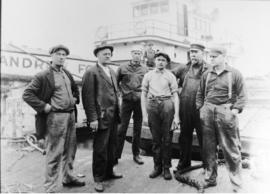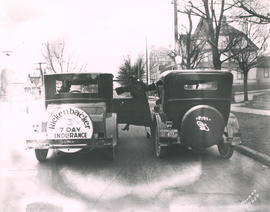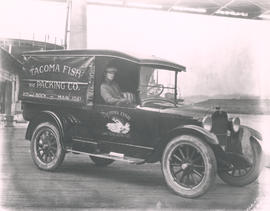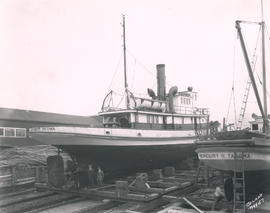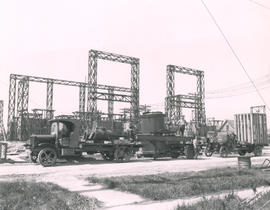ca. 1930. A large crowd gathers around Harold Bromley's fourth "City of Tacoma" plane purchased by lumberman John Buffelen on July 11, 1930, at a bargain price of $15,000. The three previous "City of Tacoma" planes were Lockheeds; this red, single-engine monoplane was built by Emsco Aircraft of Downey, California, the twelfth Emsco manufactured. It was registered as NR 153W and had a fuel capacity of 1,005 gallons. Harold Bromley had long desired to make a solo trip spanning the Pacific Ocean but after the three Lockheeds crashed, he decided to attempt the journey from Japan to take advantage of tail winds and also hired a skilled navigator and co-pilot, Harold Gatty, to accompany him. On September 14, 1930, the duo took off on a makeshift runway at Sabishiro Beach, 350 miles north of Tokyo, on their way to Tacoma some 4000 miles away. Their exhaust system failed when they were 12 hours and 1,200 miles over the Pacific and they were forced to return to Japan. Sickened by the fumes, Bromley managed to land the plane 35 miles north of their starting point. Navigator Gatty refused to make the flight again and Bromley's Tacoma businessmen backers, facing the Depression, could not afford to finance any more attempts. The plane was stored in Japan and was sold in 1932, its registration number changed, and in due time, scrapped. Harold Bromley continued to live a full life with careers in federal aviation inspection, grape and date farming and real estate; he passed away at the age of 99 in 1997. (Boyne: Best of Wings Magazine, p. 70-71)
